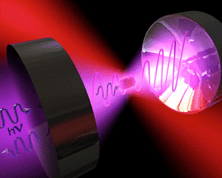Advanced Technique Involving Femtosecond Laser and Optical Tweezers for Single Cell Transfection

A group of researchers from South Korea have developed a new transfection method for delivering foreign gene fragments into a living cell. This new high precision method offers more control over the transfection process as compared to traditional transfection techniques being followed till date.
This new method employs two different high tech laboratory techniques. A high powered femtosecond laser is used to make holes on the cell surface, followed by laser powered optical tweezers for guiding the DNA fragment or gene of interest through the hole. This method enables researchers to transfect one cell at a time unlike the conventional techniques where a large number of cells are subjected to the process at a time due to the lack precise control.
In conventional techniques, a large number of cells are either damaged or destroyed during the process and only the successfully transfected cells are observed and isolated. The new technique allows the researchers to control how and when they want to insert the DNA into individual cells, making it easier for them to choose the gene they want to insert into each individual cells and also investigate the effects of transfection on each individual cell.
They have successfully tested this technique by inserting plasmids with gene coding for green fluorescent protein into the cells and observing them under fluorescence microscope. The successfully transfected cells starts producing the green fluorescent protein once the gene becomes active, and this fluorescence is detected using the fluorescence microscope. Further information about this research is available on Biomedical Optics Express.

